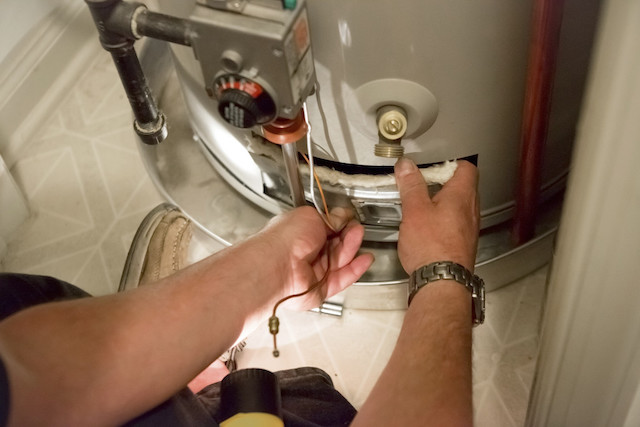HOW TO DRAIN AND FLUSH YOUR HOT WATER HEATER
Jun 26, 2015

No modern convenience is more luxurious than a long, hot shower. But while you’re relaxing under the spray, do you consider its source? If your hot water heater hasn’t been well-maintained, mineral deposits like rust may have built up inside it. They make that long soak somewhat less than the squeaky-clean experience you were hoping for.
Poor hot water heater maintenance also hurts you in the energy conservation department. In a gas heater, mineral deposits will act as a barrier between your water and the gas burner; your water will take more energy — and more money — to heat. In an electric heater, deposits may build up on the heating elements, reducing their efficiency. Imagine an icicle slowly forming, and you’ll have a pretty good idea of what a dirty heating element can look like!
Luckily, it’s easy to drain and flush your hot water heater. You don’t need to do it very often; every one to two years should be enough to keep your water running ship-shape and your budget in balance.
Step 1: Determine the type of hot water heater you have.
If you have an electric heater, look for your breaker box. It’s usually a small, gray box with a swinging door attached to a wall, often on the inside of your home. It will be filled with switches. Older homes may have a fuse box instead of a breaker box. This box will be filled with small tubes with glass or metal ends.
If you have a gas heater, look for the thermostat. It’s a knob that will be located outside the heater and near the gas pipe’s entry-point. The knob will have three settings: Pilot, On, and Off.
Step 2: Turn your heater off.
If you have an electric heater, flip the breaker switch or unscrew the fuse that controls it. If you have a gas heater, turn the thermostat to Pilot. If a pilot setting is not available, switch the unit off. Contact a professional if you are unable to clearly determine whether the unit is off.
Step 3: Turn off the water supply to your heater.
Locate a valve near the cold water pipe inlet at the top of the hot water tank. Rotate this valve clockwise to halt the water supply. Some valves only require one turn, but some may take several. Make sure your valve is entirely turned off. Note that you don’t have to turn off the water main to your whole house; just the cold water inlet at the tank will do!
Step 4: Attach a garden hose to the drain valve at the bottom of the heater.
Most drain valves look like the end of a regular hose. Sometimes they are round dials with a threaded aperture; sometimes they are hidden under a removable cover. Attach your garden hose to the drain valve. At this step, you should also release the pressure valve located near the drain valve to let extra air out of the tank.
Step 5: Place the end of the hose in a bucket or extend it to a yard drain, sump hole, or ditch. Open the drain valve.
Voila! Your hot water tank will drain through the garden hose. Remember that the water draining will still be hot. Cheaper hoses or buckets may be damaged by hot water, and it could burn you if you touch it, so be careful. It would be best to allow the water to cool down before draining if you have time.
Step 6: Open a hot water faucet in your house.
Turn on a hot water faucet in a sink or tub. This will insure a vacuum is not created in the line when you flush your heater, so that your tank drains more fully.
Step 7: Check the quality of the water.
Is the water coming from your hot water heater clear, or cloudy? If you’re draining into a bucket, is there sediment at the bottom? If you see any signs that your hot water heater needs more flushing, close the drain valve, open the cold water valve, fill the tank halfway and then repeat the draining process. Do so until the water from the tank runs completely clear.
Step 8: Finish up!
Once the water from the tank is running clear and clean, it’s time to reverse the process. Close the drain valve and remove the hose. Open the cold water valve and allow the tank to fill back up with water. Release the air pressure valve, close it again, and turn the power or gas to the hot water tank back on. Keep the interior faucet running until your hot water is running clear again, with no spurting or air bubbles.
Congratulations! You’ve successfully drained and flushed your hot water heater.
If you need more help or advice on hot water heaters, call Newcomb and Company at 919-862-3000. We’re experts on maintaining pipes and drains of all kinds!
Need help? Call now.